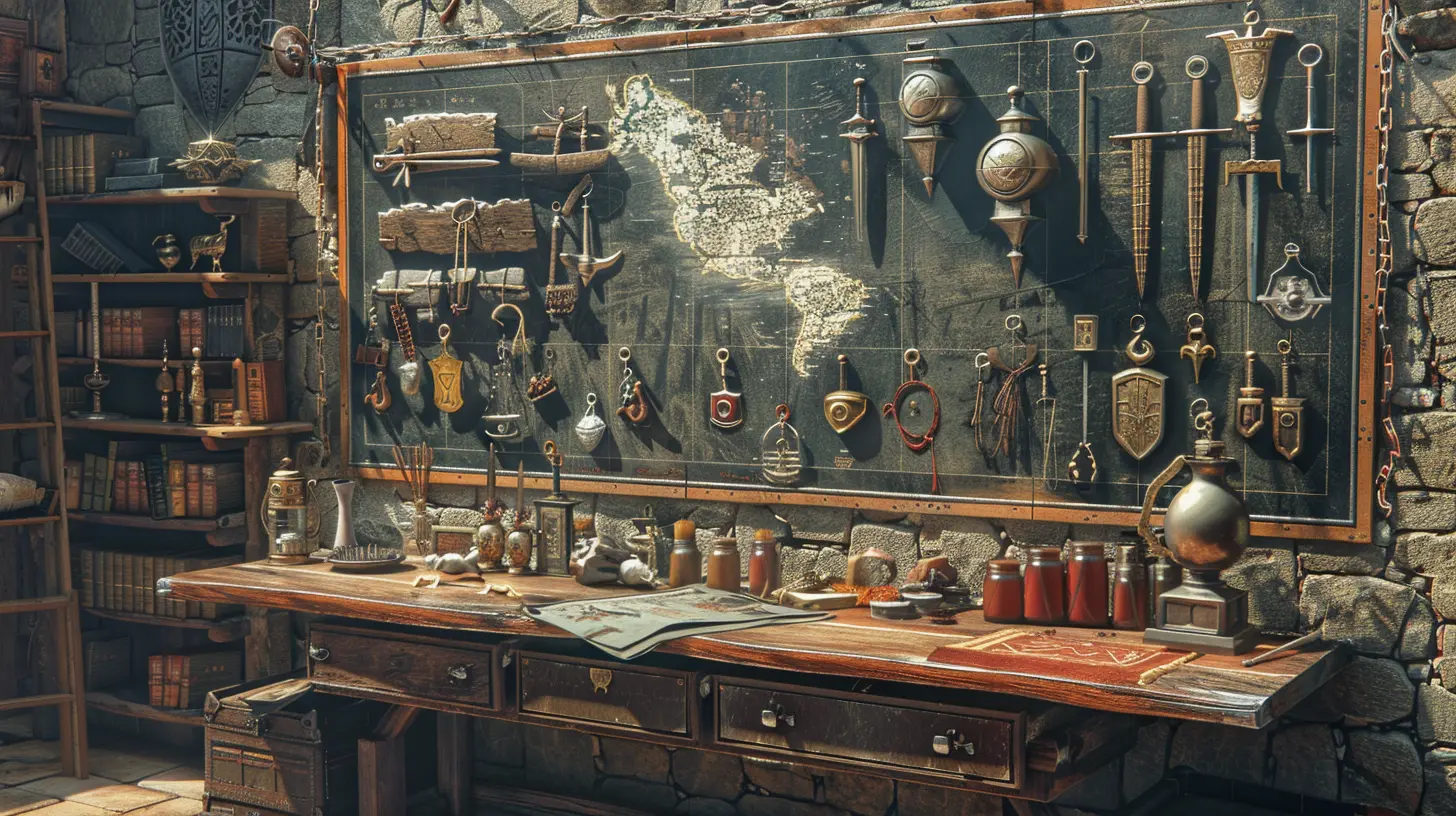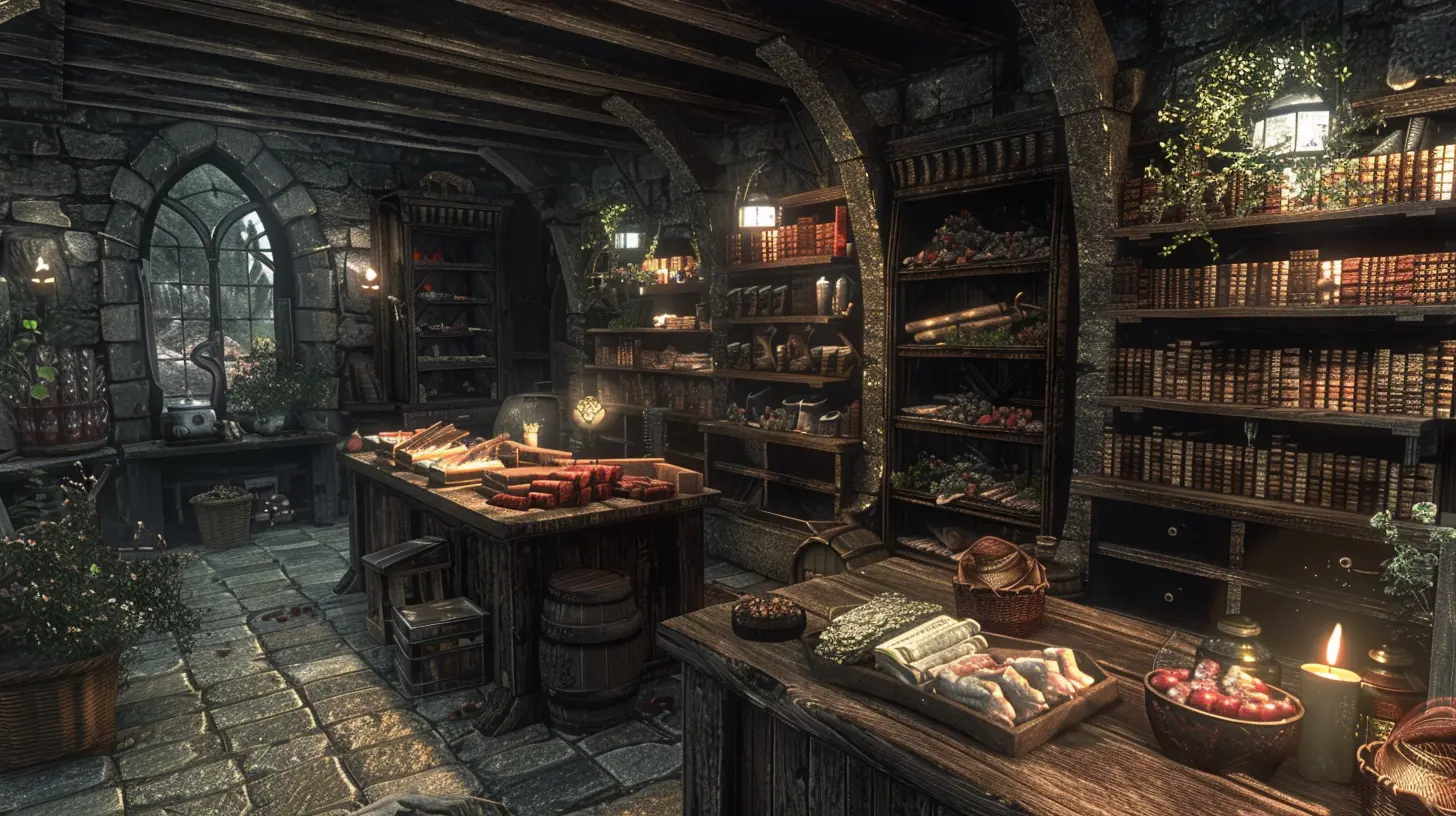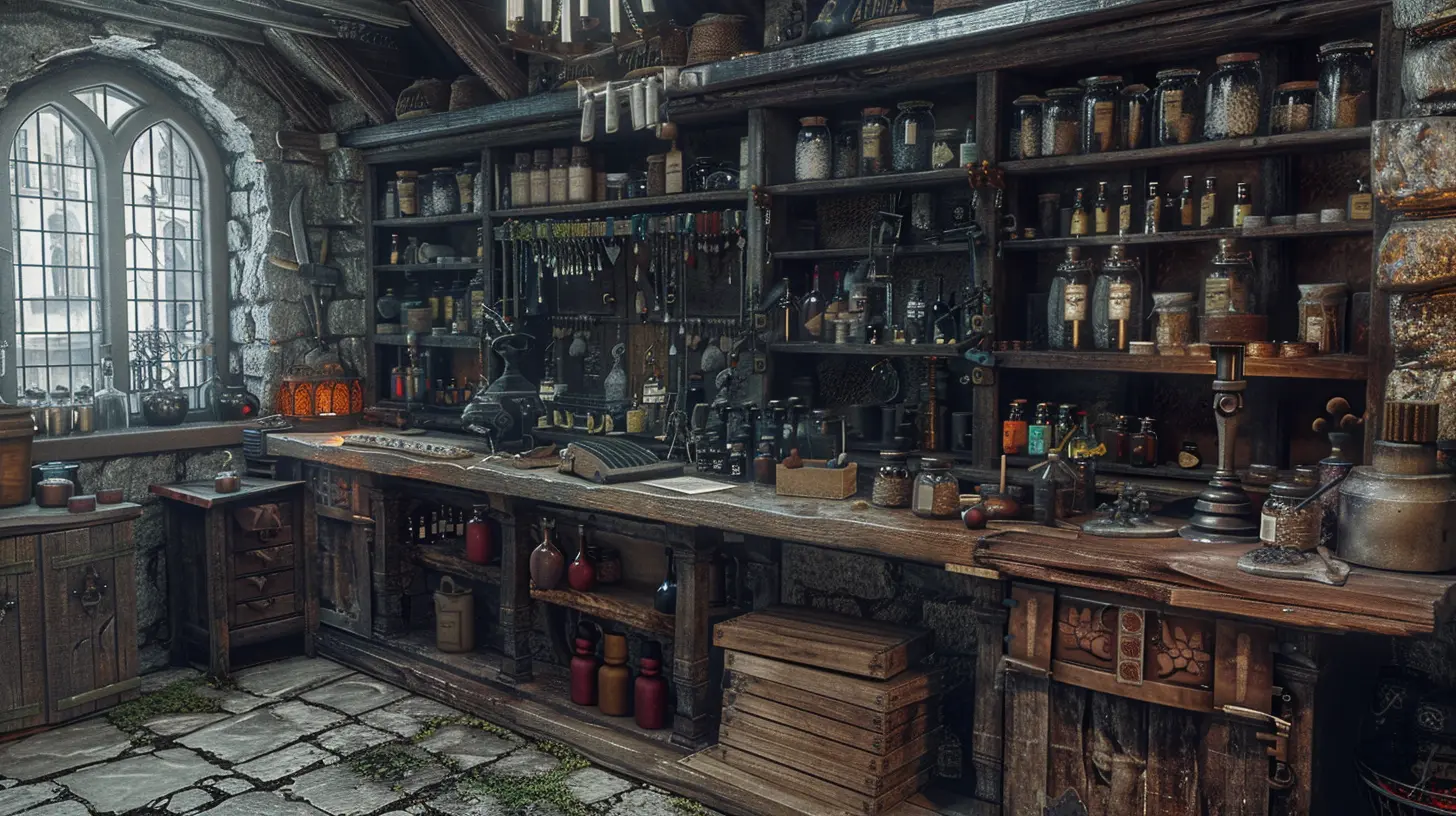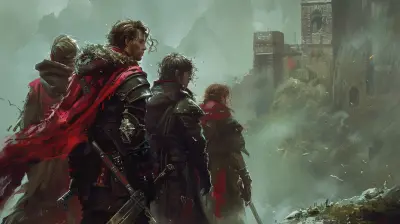How Item Crafting Enhances Immersion in RPGs
4 August 2025
Let’s be honest here—when you think about what makes a role-playing game (RPG) truly great, what comes to mind? Is it the epic storylines? The customizable characters? The expansive, open-world maps? Sure, all that stuff is awesome. But there's one often overlooked gem hiding in plain sight: item crafting.
Yep, I’m talking about mixing herbs, forging swords, brewing potions, or piecing together magical artifacts. These little moments of creativity and interaction have a huge impact on how immersed we feel in our favorite fantasy worlds. So, grab your digital hammer and let’s talk about how item crafting enhances immersion in RPGs!
What is Item Crafting, Anyway?
Let’s kick things off with a quick breakdown. Item crafting is the in-game process of creating new gear, weapons, potions, or other useful items by combining materials or ingredients. Think of it as your character's version of cooking a five-star meal—with dragon scales, enchanted wood, and a sprinkle of unicorn tears.Some games make it simple: grind for a few materials, click a button, and boom—you’ve got a potion. Others take it up a notch and introduce entire crafting systems: blacksmithing, alchemy, cooking, enchanting—you name it.
Why It’s More Than Just a Game Mechanic
Sure, item crafting sounds like a side-activity. But hold up, it’s actually a ton more than that. Crafting weaves itself into the fabric of the RPG world. It reinforces your connection to the environment, deepens storytelling, and gives your character a sense of purpose beyond just killing monsters and looting treasure. It’s the glue that holds the immersive experience together.Let me explain with a few analogies. Think of the RPG world as a giant stage. The quests are your plot, the characters are your cast, and crafting? Crafting is the backstage magic. It's the props, the set designs, the costume changes—all the little things that convince you, "Yep, I'm actually living in this world."
You're Not Just Playing—You're Living the World
One of the most magical aspects of crafting is that it makes the game world feel alive. When you pick herbs in a forest, mine ore from a cave, or skin a beast for leather, the environment suddenly breathes with purpose. You’re interacting with the world rather than just running through it.In games like Skyrim or The Witcher 3, for example, you’re not just wandering through the wilds for fun. You're gathering ingredients for powerful potions, legendary armor, or personalized weapons. Every item you collect has value. That forest isn’t a background—it’s your pharmacy. That mountain isn’t just scenery—it’s your metal shop. And that makes a huge difference to how deeply you’re drawn into the game.
Crafting Builds Character—Literally
Let’s not forget how crafting helps you shape your in-game persona. Are you the rugged hunter crafting arrows from bones and feathers? Or the brainy alchemist brewing poisons in your shady little hut? Maybe you’re the noble blacksmith, forging weapons worthy of legend?Crafting adds depth to your character roleplay. It’s not just about stats and gear—it’s about who your character is in the world. In RPGs that allow for class or skill customization, like Fallout: New Vegas or Divinity: Original Sin 2, crafting can even influence your gameplay style. You might choose to boost crafting skills over combat skills—and suddenly, you’re a merchant or potion master instead of a front-line warrior.
That’s real immersion. You’re not being told a story—you’re living your own.
Discovery and Experimentation = Pure Joy
One of the coolest things about crafting is the element of discovery. Mixing unknown ingredients and getting unexpected results is kind of like being a mad scientist. Will this combo create a powerful elixir… or totally blow up your face? Only one way to find out!That unpredictability is exciting. It sparks curiosity. It lures players into experimenting, reading lore, and paying attention to ingredient descriptions. Games like Morrowind made you feel like a full-blown scholar, digging through dusty books to learn rare potion recipes and magical enchantments.
And let’s be real, who didn’t feel like a genius after finally crafting that legendary armor set you’ve been working toward for hours? That payoff? Mmm, chef’s kiss.
Crafting Systems Encourage Exploration
You know that moment when you see a sparkling rock off the beaten path and detour from your quest just to mine it? That’s crafting doing its work.Ingredient-based crafting turns players into curious explorers. You’ll roam forests, caves, dungeons, and deserts—not just to chase down enemies, but to collect rare ingredients. This adds another layer of meaning to open-world exploration. You're not just wandering aimlessly; you have a purpose.
In Monster Hunter: World, for instance, crafting is essential. Every monster carves your path forward. To craft better gear, you need to face tougher creatures, gather rarer materials, and adapt your strategy. It all feeds into a loop of progression that feels earned.
Economic Gameplay & Trading Adds Realism
Crafting often ties into an in-game economy, adding layers of realism and player agency. You can sell potions, barter weapons, or even open up your own store in some games. This introduces RPG economics and makes crafting more than just a personal bonus—it becomes a way to build wealth and reputation.Games like Stardew Valley and Final Fantasy XIV (yes, even MMOs!) thrive on player-made items. It’s not just about crafting for yourself—you’re contributing to a living, breathing virtual marketplace. That sense of being part of a bigger picture? Yep, you guessed it—massive immersion boost.
Personalization Drives Investment
Another major win for crafting is customization. Want a sword with fire damage? Or a potion that boosts health and stamina? Crafting lets you tailor your gear to your playstyle.When items are crafted rather than bought, they carry personal value. That sword wasn’t handed to you—it was made by you. You gathered the materials, chose the enchantments, and put it together yourself. That gives your gear a backstory—and you, my friend, are the storyteller.
Crafting Isn’t Always a Grind (When Done Right)
Okay, I can hear some of you groaning—"Crafting is boring. It’s just grinding."And hey, you're not wrong. Some games do get a little too obsessed with endless fetch quests and repetitive crafting loops. But when it's designed well? Crafting can be just as thrilling and rewarding as any boss fight.
Games like Breath of the Wild nailed this balance. Crafting wasn’t a chore—it was fun, simple, and connected directly to survival. You collect mushrooms and meat, toss them into a pot, and poof! Delicious stat-boosting meals. That’s not a grind—that’s dinner!
The key is making crafting intuitive but deep enough to stay interesting. When done right, it flows naturally and adds another layer to your journey.
Multiplayer Crafting = Team Bonding
Let’s not forget about multiplayer RPGs, where crafting can be a hugely social mechanic. One friend might specialize in forging weapons while another brews support potions. Suddenly, you're not just adventurers—you’re a team with roles and synergy.In games like Valheim, players often build entire settlements together, with crafting at the very heart of the experience. You share resources, prioritize upgrades, and celebrate every new creation as a community achievement.
That kind of shared effort? Incredibly immersive.
Crafting Feeds the Role-Playing Fantasy
Remember the "RP" in RPG? Crafting brings that role-playing fantasy to life. It lets you do the things your character would logically do in their world. A mage makes their own potions. A rogue brews poisons. A ranger fletches arrows.Suddenly, your character isn’t just some stats on a screen—they’re a fully realized person with a craft, a trade, and a daily grind. Just like any real person. That’s immersive storytelling through gameplay, and it’s absolutely beautiful.
Final Thoughts: Crafting Is the Heartbeat of Immersion
At the end of the day, crafting might seem like a small piece of the puzzle—but it’s one of the parts that makes the whole picture come to life. It connects you to the world, gives you a sense of ownership, shapes your character, and turns passive gameplay into interactive storytelling.So the next time you're deep in an RPG and you pause to gather herbs or smelt some iron, take a moment to appreciate what’s really happening. You’re not just clicking buttons—you’re building your own legacy in a world that feels real. And that, my friend, is what immersion is all about.
all images in this post were generated using AI tools
Category:
Item CraftingAuthor:

Tina Fisher
Discussion
rate this article
1 comments
Holden Howard
Crafting in RPGs is like cooking a gourmet meal—except instead of sautéing onions, you’re combining dragon scales and enchanted mushrooms! Who knew that mixing virtual ingredients could turn me into a master chef and a legendary hero? Bon appétit, adventurers! 🍳⚔️
August 9, 2025 at 4:11 AM

Tina Fisher
Absolutely! Just like cooking, crafting in RPGs adds depth and creativity, allowing players to become immersed in a world where even the most fantastical ingredients can lead to legendary outcomes. Bon appétit indeed! 🍳⚔️


